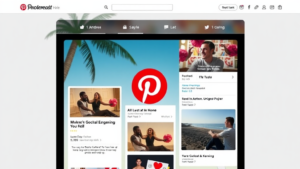Pinterest has rapidly gained traction as a unique platform for affiliate marketing, enticing marketers and entrepreneurs alike. With its visually-driven nature, Pinterest allows users to discover and share content that resonates with their interests. This makes it an ideal environment for promoting products through affiliate links.
One of the primary advantages of utilizing Pinterest for affiliate marketing is the platform’s longevity in content engagement. Unlike social media platforms that have fleeting content life spans, pins on Pinterest can continue to drive traffic long after they are posted. This enduring visibility can translate into consistent affiliate sales over time.
In addition, Pinterest’s user base is predominantly composed of individuals actively seeking inspiration for purchases. This intent-driven audience means that affiliate marketers can connect with potential buyers more effectively. By curating boards that align with specific niches, marketers can attract users who are already interested in their products.
Utilizing Pinterest effectively for affiliate marketing involves creating high-quality pins that capture attention. Engaging visuals, clear descriptions, and strategically placed keywords can enhance visibility. Using tools such as Canva to design eye-catching graphics is essential for standing out in users’ feeds.
- Focus on relevant niches to attract the right audience.
- Use rich pins to provide more context about products.
- Schedule pins during peak engagement times for maximum exposure.
Furthermore, Pinterest’s search functionality supports long-tail keywords, making it easier for users to find specific content. Incorporating these keywords within pin descriptions can significantly boost the chances of reaching a wider audience.
Overall, Pinterest is a commendable platform for affiliate marketing. By capitalizing on its visual appeal, intent-driven audience, and long-lasting content, marketers can create successful affiliate strategies that yield sustainable results.




